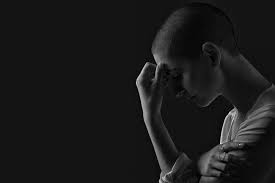Did you know that there are different types of bipolar disorder? It’s a mental illness that affects how a person feels, thinks, and behaves. There are four main types of bipolar disorder. Each type has its own set of symptoms. In this blog post, we will discuss the signs and symptoms of each type so that you can better understand and cope with this mental illness.
Contents
What Is Bipolar Disorder?
 Bipolar disorder is a mental illness that causes extreme mood swings. The highs are called manic episodes, and the lows are called depressive episodes. People with bipolar disorder can have both types of episodes, or they can have just one type.
Bipolar disorder is a mental illness that causes extreme mood swings. The highs are called manic episodes, and the lows are called depressive episodes. People with bipolar disorder can have both types of episodes, or they can have just one type.
This is an illness that usually starts in adolescence or early adulthood, but it can also start in childhood. It is more common in women than men. Because bipolar is about mood swings, it can be hard to diagnose.
If we talk about the prevalence that is the number of people affected by a disorder, bipolar disorder affects about two percent of adults in the United States. And it is one of the leading causes of disability worldwide. The reason, however, is not just the prevalence, but also because of how impairing bipolar disorder can be.
Therefore, it is important to learn about the different types of bipolar disorder, as well as the signs and symptoms. Because when you are equipped with this knowledge, you will be able to seek help early on and get the treatment that you need.
What Are The Bipolar Types?
There are four types of bipolar disorder. The type you have affects the severity and duration of your symptoms, as well as how often they occur. Let’s take a closer look at the different bipolar types.
Bipolar I Disorder
Bipolar I disorder is characterized by episodes of severe mania and depression. The manic episodes last for at least seven days, or they’re so severe that hospitalization is necessary. The depressive episodes last for two weeks or longer. In between these episodes, you may have periods of normal mood.
This type of bipolar disorder is the most severe. If you have bipolar I disorder, you’re at a higher risk of developing substance abuse problems and attempting suicide. Because of the severity of this disorder, it’s important to get treatment as soon as possible.
Bipolar II Disorder
Bipolar II disorder is similar to bipolar I, but the manic episodes are less severe. They’re called hypomanic episodes, and they usually last for four days or less. You also have depressive episodes that last for two weeks or longer. For example, you may have a hypomanic episode where you feel great and have lots of energy.
But then you crash into a deep depression. Also, bipolar II disorder is often misdiagnosed as major depression. That’s because the manic episodes are not as obvious as they are with bipolar I disorder. This bipolar type is more common in women than men. And, like bipolar I disorder, there is no known cause. But it does seem to run in families.
Cyclothymic Disorder
 Cyclothymic disorder, also called cyclothymia, is a milder form of bipolar disorder. The signs and symptoms are not as severe as those seen in other forms of bipolar disorder, but they can still be disruptive to your life. The risk factors to develop this type of disorder include having a family member with bipolar disorder or another mood disorder, such as depression.
Cyclothymic disorder, also called cyclothymia, is a milder form of bipolar disorder. The signs and symptoms are not as severe as those seen in other forms of bipolar disorder, but they can still be disruptive to your life. The risk factors to develop this type of disorder include having a family member with bipolar disorder or another mood disorder, such as depression.
If you have a cyclothymic disorder, you may swing from feeling happy and energized to feeling sad and down for days or weeks at a time. These mood swings are usually less severe than those seen in other forms of bipolar disorder. However, they can still interfere with your ability to function at work, school, or at home.
Mixed bipolar
This is one of the most difficult types of bipolar to diagnose because it can look like either type I or type II. The person experiences both a manic and a depressive episode, but there is also a period of normalcy in between. It can be hard to tell when the person is actually experiencing symptoms because they may not be as severe as with other types.
For example, a person with mixed bipolar may have a manic episode that lasts for a few weeks, but then they may only experience depression for a couple of days. They may also have periods where they don’t experience any symptoms at all. This can make it difficult to know when the person is actually sick and in need of treatment.
So these are the most common types of bipolar disorder. As you can see, each one is unique and has its own set of symptoms. It’s important to be familiar with the different types so that you can better understand the illness and how to treat it. If you think you or someone you know may be suffering from bipolar disorder, it’s important to seek help from a doctor or mental health professional.
Common Signs And Symptoms
As there are different types of bipolar disorder, there are also different symptoms associated with each type. However, there are some common symptoms that are seen in all types of bipolar disorder. These include:
Depression
This is the most common symptom of bipolar disorder and can include feelings of sadness, worthlessness, and hopelessness. It is important to note that not everyone who is depressed will experience all of these symptoms. For example, some people may only feel hopelessness, while others may only feel sadness.
Mania
This is the second most common symptom of bipolar disorder and can include feeling excessively happy or elated, having lots of energy, being easily distracted, and engaging in risky behaviors. Again, it is important to note that not everyone who experiences mania will have all of these symptoms and that the severity of mania can vary from person to person.
Emptiness and worthlessness
It is common for people with bipolar disorder to feel worthless or empty. They may feel like they have nothing to offer others, and that their lives are meaningless. People with any bipolar type may experience these feelings during a depressive episode. Because it is so common, it is important to be aware of this symptom and seek help if you are feeling empty or worthless.
Loss of interest in activities
When people are depressed, they may lose interest in activities or hobbies that they once enjoyed. This can be one of the first signs that something is wrong. For example, someone who used to love going out on walks may suddenly stop doing so. And it might not just be one activity – they may lose interest in many things.
Changes in sleep patterns
 It is not uncommon for people with bipolar disorder to have difficulty sleeping. This can manifest itself in a number of ways, including:
It is not uncommon for people with bipolar disorder to have difficulty sleeping. This can manifest itself in a number of ways, including:
- Trouble falling asleep
- Waking up frequently during the night
- Sleepwalking
- Night terrors
If you notice any of these changes in your sleep patterns, it is important to speak with a mental health professional. All of these symptoms can be extremely disruptive to your life and can lead to further mental health problems if left untreated.
Thus, you should keep an eye out for any changes in your overall health and quality of life. Bipolar types can be difficult to live with, but with the proper treatment, it is possible to lead a happy and healthy life. If you think you may be suffering from bipolar disorder, please reach out for help. There are many resources available to you and your family.
How Does It Impact Life?
This might be the most important question to ask when considering bipolar disorder. It doesn’t just impact those who have it, but also those close to them. Here are some key ways that bipolar disorder can impact day-to-day life:
Difficulty functioning at work or school
Bipolar disorder can make it difficult to focus and be productive at work or school. This can lead to problems with job performance or grades. For instance, a person with bipolar disorder may miss deadlines, show up late, or call in sick often. And it makes it hard to concentrate on school work or to stick with long-term projects.
Problems with relationships
Bipolar disorder can also take a toll on personal relationships. The condition may cause mood swings that make it hard to relate to others. People with bipolar disorder may also act impulsively, which can lead to arguments or conflict. And, in some cases, people with bipolar disorder may withdraw from friends and family altogether.
Difficulty taking care of oneself
Bipolar disorder can make it hard to take care of day-to-day responsibilities, such as eating healthy, exercising, and getting enough sleep. This can lead to problems with weight, energy levels, and overall health. People with bipolar disorder may also have trouble keeping a job or managing their finances.
Increased risk of substance abuse
This is often seen as a way of self-medicating the symptoms of bipolar disorder. However, it can lead to even more problems and make it harder to manage the condition. As the studies have found, people with bipolar disorder are more likely than the general population to develop substance abuse problems.
Suicidal thoughts or behaviors
 The bipolar types can be life-threatening. People with any type of bipolar condition may have suicidal thoughts, make suicide attempts, or succeed in taking their own lives. Because of this, it’s important to get help if you or someone you know is showing signs of bipolar disorder.
The bipolar types can be life-threatening. People with any type of bipolar condition may have suicidal thoughts, make suicide attempts, or succeed in taking their own lives. Because of this, it’s important to get help if you or someone you know is showing signs of bipolar disorder.
If you think you may have bipolar disorder, talk to your doctor. They can help you figure out what type of bipolar condition you have and create a treatment plan. Treatment for bipolar disorder often includes medication and therapy. With treatment, people with bipolar disorder can live full and happy lives.
How To Manage Bipolar Types?
If you are suffering from any type of bipolar disorder, it is important to seek professional help. A qualified mental health provider can give you a proper diagnosis and recommend an effective treatment plan. Also, there are some things that you can do to manage any bipolar type effectively.
So here are some tips on how to manage different types of bipolar disorder:
Monitor your mood
This is one of the most important things you can do to manage your bipolar disorder. Be aware of your mood and keep track of any changes. This will help you identify patterns and triggers so that you can avoid them or be prepared for them. For instance, if you notice that you tend to get manic during the springtime, you can make sure to get extra rest and exercise during that time of year.
Talk to someone you trust
It is important to have someone to talk to who understands what you are going through. Find a friend, family member, or another support system to help you through tough times. When you share your experiences with someone who listens without judgment, you can gain a better understanding of your thoughts and feelings.
Develop a schedule
 This will help you immensely. When you have bipolar disorder, organization is key. This means setting a schedule for yourself and sticking to it as much as possible. Get up at the same time every day, go to bed at the same time, eat meals at regular intervals, and so on. Having this kind of structure will help minimize the chances of triggering a manic or depressive episode.
This will help you immensely. When you have bipolar disorder, organization is key. This means setting a schedule for yourself and sticking to it as much as possible. Get up at the same time every day, go to bed at the same time, eat meals at regular intervals, and so on. Having this kind of structure will help minimize the chances of triggering a manic or depressive episode.
Of course, there will be times when you have to deviate from your schedule – and that’s okay. Just do your best to stick to it as much as possible. And if you do find yourself going off-schedule, try to get back on track as soon as you can.
Limit stress
Stress is a huge trigger for bipolar episodes. If you’re not careful, it can lead to a full-blown manic or depressive episode. That’s why it’s important to find healthy ways to deal with stress. Some people use exercise, meditation, or therapy. Others find that journaling or spending time in nature helps them relax.
Build a support system
It is important to have a support system in place when you are dealing with bipolar disorder. This could be a group of friends or family members who can offer emotional support. It is also important to find a therapist or counselor who can help you manage your condition. Because when you share your feelings with someone who understands, it can make all the difference.
Take care of yourself
Taking care of yourself is important, especially if you have bipolar disorder. There are some things that you must include in your daily routine, such as:
- Eating a balanced diet
- Getting regular exercise
- Avoiding alcohol and drugs
- Getting enough sleep
If you have bipolar disorder, you may also need to take medication. Medication can help balance your moods and make it easier for you to manage your condition. You should work with a mental health professional to deal with your bipolar disorder. They can help you develop a treatment plan that is right for you.
So there you have it, a quick overview of the different types of bipolar disorder. Remember, if you think you may have bipolar disorder, it is important to seek professional help. With the right treatment, you can live a happy and healthy life.
Conclusion
To conclude, bipolar types are classified according to the severity and frequency of episodes of mania or depression. The most important thing to remember is that each type is unique, and treatment should be tailored to the individual. If you think you may have bipolar disorder, it is important to seek professional help.
As it is a serious mental illness, the bipolar disorder should not be taken lightly. If you think you may have the condition, please consult with a doctor or mental health professional as soon as possible.
For more tips and guidance, you can reach out to Therapy Mantra. The team of professional counselors is more than happy to help you in your journey to self-care and relaxation. Contact us today to learn more about our services. You can also book an online therapy session or download our free Android or iOS app.


